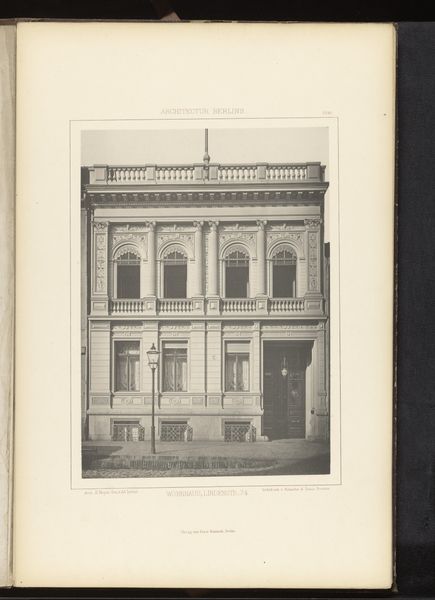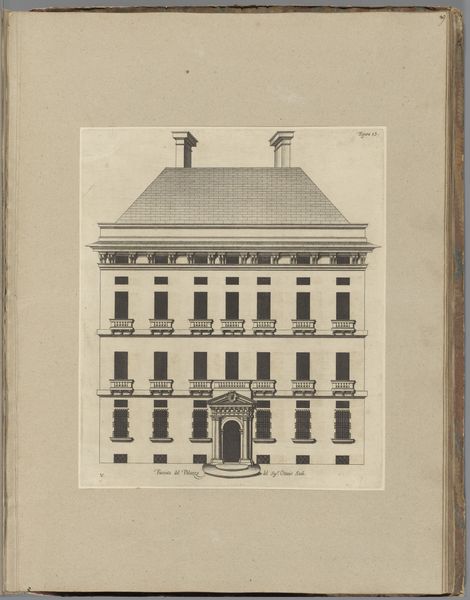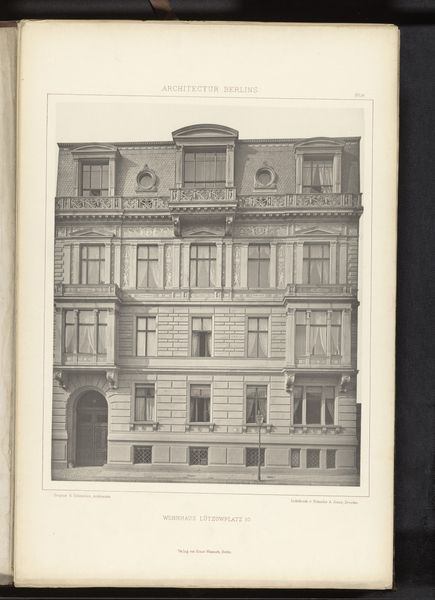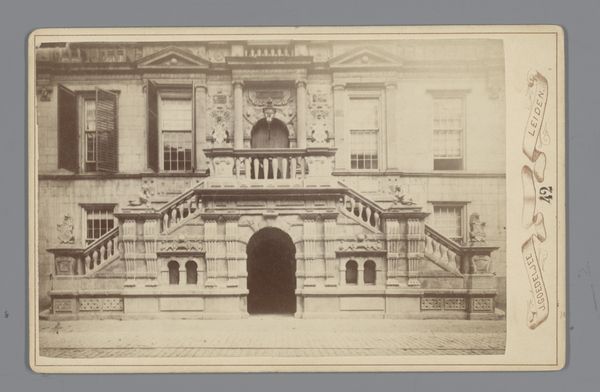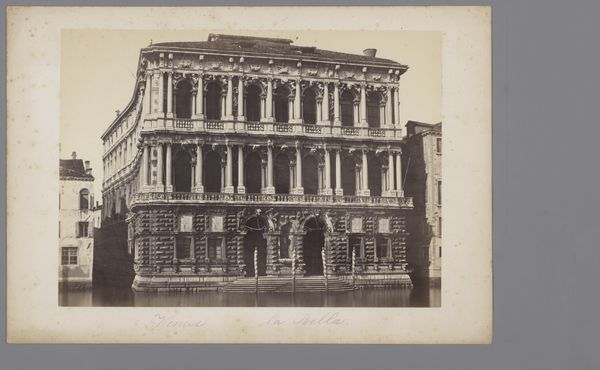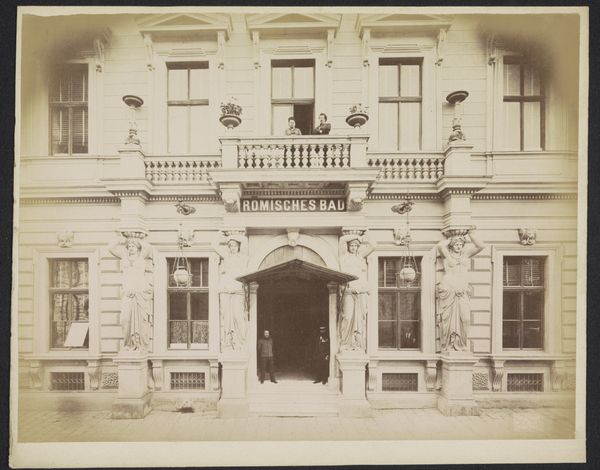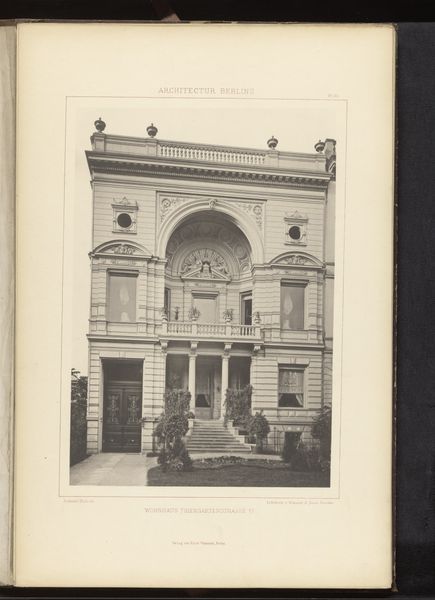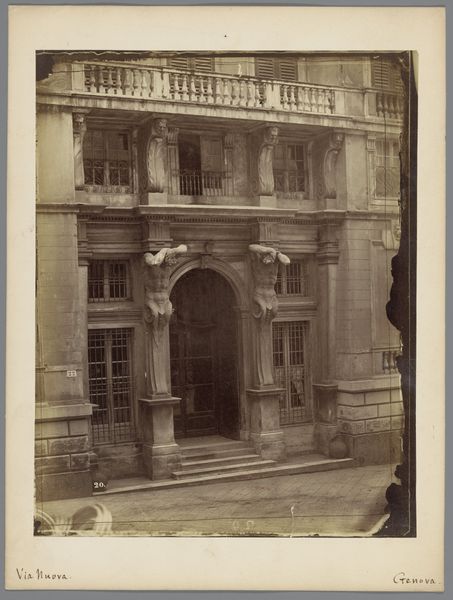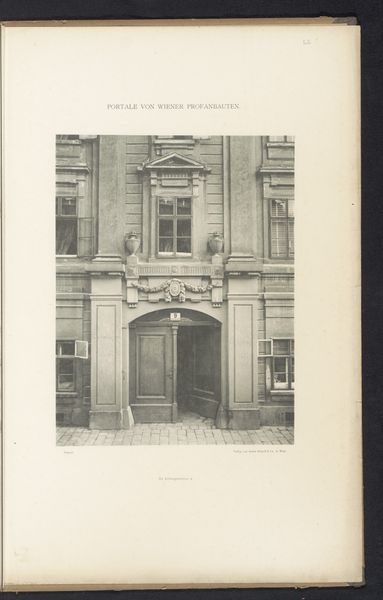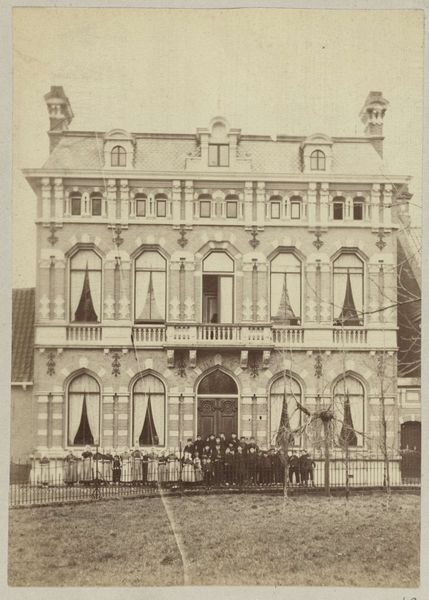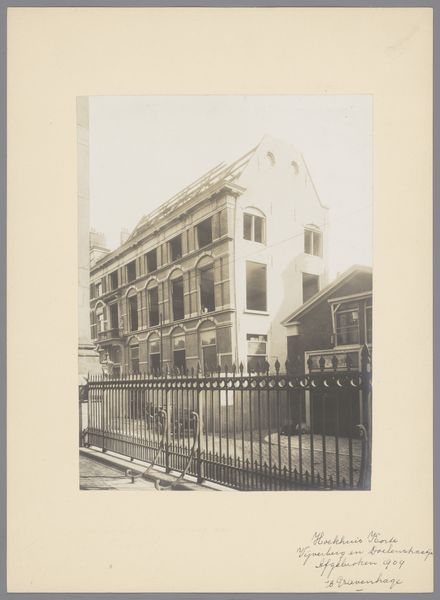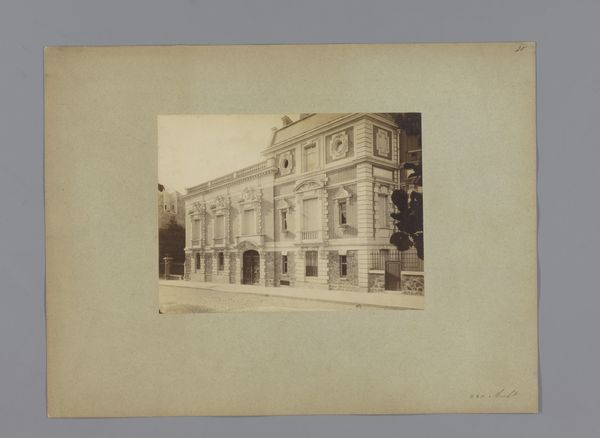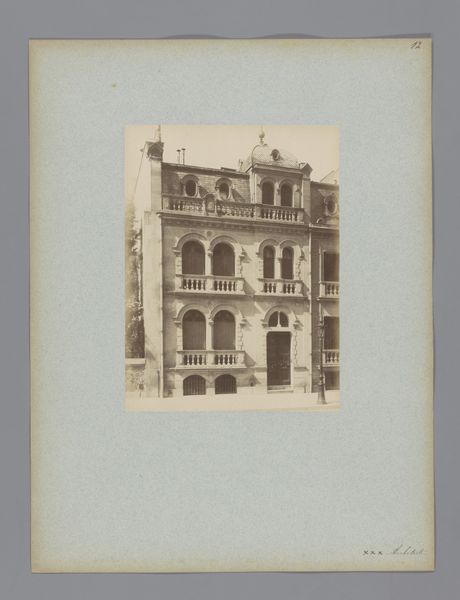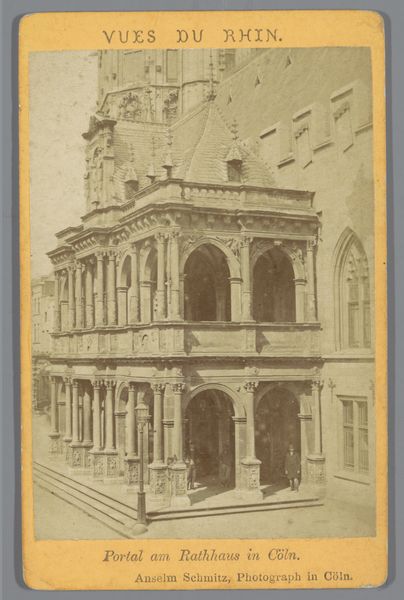
Dimensions: height 295 mm, width 226 mm
Copyright: Rijks Museum: Open Domain
Curator: My first impression is one of solemn grandeur. Editor: Indeed. What we're observing is a photographic print titled "Gezicht op Palais Ofenheim in Wenen, Oostenrijk" by Hermann Heid. The Palais Ofenheim view, placing this image between 1865 and 1891, strikes me with its symmetrical order. Curator: Precisely. The symmetry almost feels like a statement. The classical elements, such as the Corinthian columns and the sculpted friezes, impose a rigid, formal structure on the facade. Editor: Absolutely, we can discuss the social implications of this image within the context of 19th-century Vienna. Palaces like this represented the power and wealth of the elite, reinforcing a visual hierarchy in the urban landscape. The two figures, perhaps guards or doormen, further emphasize the accessibility—or lack thereof—to those inside. Curator: If we disregard for a moment that the Palais exists outside the photograph, do the human figures serve another purpose besides simply marking social difference? Their small scale when contrasted to the building's grandiose stature enhances the architecture’s dominance within the photographic space. The light, emanating softly across the details of the stonework, creates a rhythm. Editor: I agree, and that rhythm can be thought of as analogous to a drumbeat of imperial presence. These structures were not merely aesthetic objects. The visual language broadcasts specific social narratives that subtly promoted stability. The Baroque revival styling reinforced claims to lineage. Curator: It is, quite effectively, both portraiture and landscape. Though one might normally expect to encounter buildings, they are hardly ever seen or interpreted in tandem with real life! Editor: You’re right to point that out, there’s a tension between the artwork itself as art and its inherent connection to reality outside the work itself. Viewing art can often seem to be just one way to encounter reality indirectly! Curator: Well said. I am struck now by the interplay of depth. What had seemed stark begins to soften as you ponder its effect. Editor: Thank you. Analyzing the Palais Ofenheim through both its formal composition and its cultural milieu offers a broader, perhaps richer, interpretation.
Comments
No comments
Be the first to comment and join the conversation on the ultimate creative platform.
